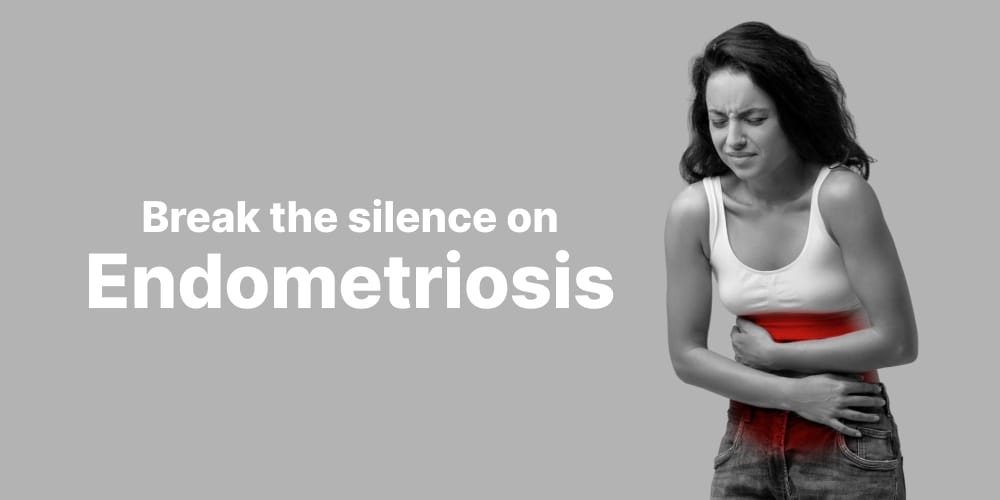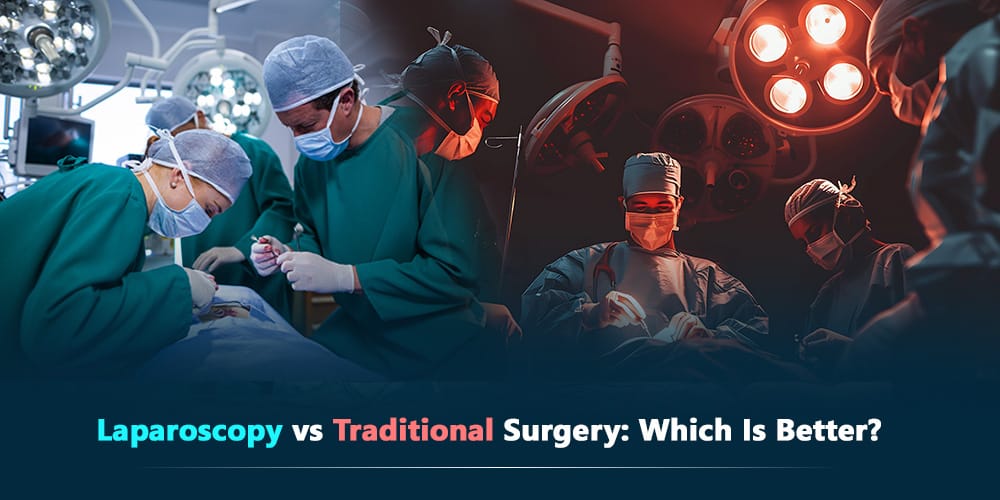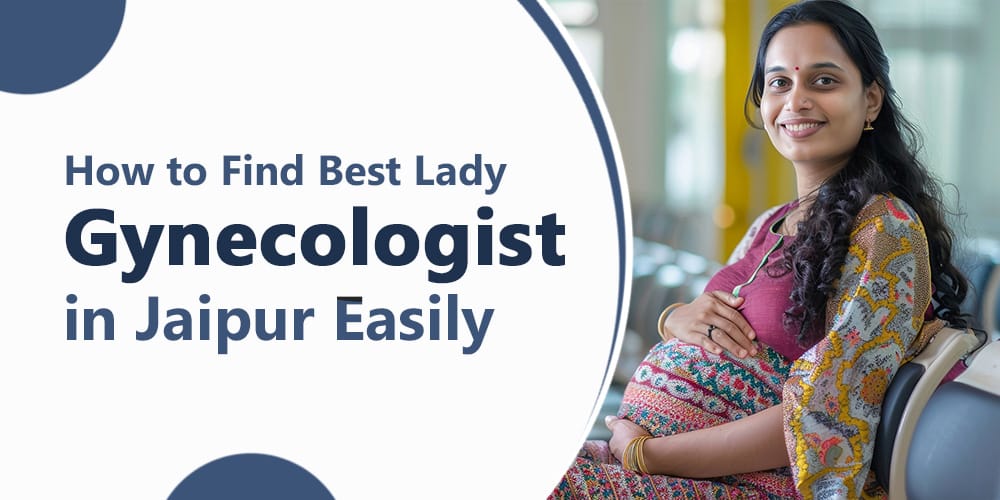You know the crippling pain in your abdomen that makes you miss your work or daily life! Or the problem that prevents you from conceiving, but you don’t have any explanation?
On Google, the most asked questions are “What is endometriosis?” or “endometriosis symptoms.”
In India, women’s reproductive health is still hush-hush, which leads women to suffer silently.
Answering the most asked question: What is endometriosis?
No, you don’t have to dismiss your severe period pain or endure it without medical intervention.
First, let’s understand endometriosis.
In your womb, there is a lining (endometrium) that thickens (to prepare for an upcoming pregnancy) or sheds (as your period).
But what happens is it grows outside the womb and does the same thing. However, the blood has nowhere to go. Intense pain and unimaginable discomfort, sounds familiar? Yes, this is endometriosis.
You may have the misplaced endometrium in these areas:
- Ovaries (chocolate cysts or endometriomas)
- Fallopian tubes
- Outer womb
- Ligaments that support the womb
What happens next?
- Inflammation.
- Pain: Often severe, especially during periods.
- Scar tissue (adhesions): This can bind organs together, causing pain and problems.
- Cysts: Especially on the ovaries.
Explaining the causes of endometriosis
We still don’t understand the exact causes of endometriosis. Here are some leading theories:
Retrograde Menstruation: This is a widely accepted idea. Instead of all menstrual blood flowing out of the body, some of it flows backward through the fallopian tubes and into the pelvic cavity. These endometrial cells attach themselves to organs and start growing.
Genetic Predisposition: If your mother or sister has endometriosis, you have a higher chance of developing it.
Immune System Dysfunction: Our immune system is supposed to find and destroy misplaced cells. In women with endometriosis, the immune system might not be working correctly, failing to recognize and eliminate the endometrial-like tissue outside the womb.
Hormonal Influence: Estrogen, the female hormone, plays a crucial role in making the endometrium grow. Endometriosis is an estrogen-dependent disease, meaning estrogen fuels its growth and activity.
Cell Transformation: In some cases, other cells outside the womb might transform into endometrial-like cells.
The Cries of Your Body: Endometriosis Symptoms
Some women might have severe endometriosis with mild pain, while others have minimal disease with excruciating pain.
Painful Periods (Dysmenorrhea): The pain is usually much worse than typical period cramps and can start even before your period begins and last for several days after it ends.
Chronic Pelvic Pain: Persistent pain in the lower abdomen and pelvis, even when you’re not having your period.
Pain During or After Sex (Dyspareunia): Deep pain during intercourse is a common and distressing symptom, often making intimacy difficult.
- You might experience very heavy bleeding (menorrhagia) or bleeding between periods (spotting).
- Endometriosis can block fallopian tubes or damage ovaries, making it hard for an egg to be fertilized or implant.
- Many women with endometriosis report chronic tiredness, which goes beyond just feeling sleepy.
What about “Endometriosis Polyps Symptoms”?
Endometriosis does not cause “polyps” in a way we understand uterine polyps.
Uterine polyps are overgrowths of the normal endometrial lining inside the uterus.
However, a woman can have both endometriosis and uterine polyps.
- Uterine polyps would cause irregular bleeding, bleeding between periods, or heavy periods
- Pain related to endometriomas (chocolate cysts) on the ovaries
- Endometriosis can form firm nodules or lumps in the pelvic area, which might be confused with polyps
Beyond the well-known symptoms, endometriosis can present in less obvious ways, often leading to misdiagnosis or delayed treatment.
- Pain in the Legs or Sciatica-like Pain: If endometriosis grows on nerves in the pelvis (like the sciatic nerve), it can cause radiating pain down the leg, numbness, or tingling, often worse during periods.
- Painful Urination or Blood in Urine (Cyclical Hematuria): If endometriosis affects the bladder, you might experience pain when urinating, urgency, or even see blood in your urine, especially around your period.
- Painful Bowel Movements or Rectal Bleeding (Cyclical Dyschezia/Hematochezia): When endometriosis affects the bowel, symptoms can mimic Irritable Bowel Syndrome (IBS).
- Swelling or Bloating (Endo Belly): Many women with endometriosis experience significant abdominal bloating, especially around their period, which is more than typical PMS bloat.
- Nausea and Vomiting: While sometimes linked to severe pain, some women experience nausea and vomiting as a direct symptom, particularly during menstruation.
- Pain in Incision Scars: If you’ve had a C-section or other abdominal surgery, endometriosis can sometimes grow in the scar tissue, causing cyclical pain and swelling at the site.
Finding Relief: Endometriosis Surgery and Other Treatments
Diagnosing endometriosis involves a physical examination, imaging tests like ultrasound or MRI, and often, a laparoscopy. A laparoscopy is a keyhole surgery where a small cut is made, and a tiny camera is inserted to visualize the pelvic organs and confirm the diagnosis by seeing the endometriosis lesions.
Treatment for endometriosis aims to manage pain, improve fertility, and prevent the disease from getting worse. It is highly individualized based on the severity of symptoms, the extent of the disease, and whether you want to get pregnant.
- Pain Management:
- Over-the-counter pain medications (like NSAIDs) can help with mild pain.
- Medications like birth control pills (oral contraceptives), GnRH analogues (which temporarily stop periods), or progestins can help suppress the growth of endometrial tissue and reduce pain by lowering estrogen levels.
- Endometriosis Surgery:
- Laparoscopic Excision or Ablation: During laparoscopy, the surgeon can cut out or ablate (burn off) the endometriosis lesions.
- Hysterectomy (Removal of the Womb) and Oophorectomy (Removal of Ovaries): This is typically a last resort, especially when other treatments haven’t worked, and the woman has completed her family. Removing the ovaries stops estrogen production, which can effectively reduce endometriosis growth and induce menopause.
- Surgery for Deep Infiltrating Endometriosis: If endometriosis affects organs like the bowel or bladder, specialized surgeons may be needed for complex procedures.
- Some women find that reducing inflammatory foods (like processed foods, excessive red meat) and increasing fruits, vegetables, and omega-3 fatty acids helps manage symptoms.
- Yoga, meditation, and other stress-reduction techniques can be beneficial, as stress can worsen pain perception.
- Connecting with other women who understand your struggle can provide immense emotional support.
Dr. Pankhuri is a leading gynecologist in Jaipur, known for her compassionate approach and commitment to women’s health. She combines advanced medical expertise with a patient-first mindset, ensuring every woman feels heard, understood, and empowered to take charge of her health.
Frequently Asked Questions
I’ve been experiencing a lot of pain, especially around periods. I need a consultation.
Based on what you’re telling me, your pain sounds more severe than typical period cramps. One condition that often causes this kind of strong, persistent period pain is called endometriosis. It’s a condition where the womb lining tissue starts growing outside of it, usually in your lower tummy area. These bits of tissue act just like your womb lining, thickening and trying to bleed every month.
Can you explain the symptoms of endometriosis?
Endometriosis doesn’t always just cause period pain. Sometimes, if that misplaced tissue grows near your bowel or bladder, it can cause pain when you pass stools or urine, or even lead to problems like diarrhea or constipation, especially during your period. Similarly, it can cause pain during or after sex.
My mother experienced painful periods and had trouble getting pregnant. Should I worry?
While we don’t fully understand why endometriosis happens, we do know that it sometimes runs in families. If your mother or sister has had it or experienced similar severe symptoms, your chances of having it might be a bit higher. It’s one of the things we consider when we’re trying to figure out the cause of your symptoms.”





